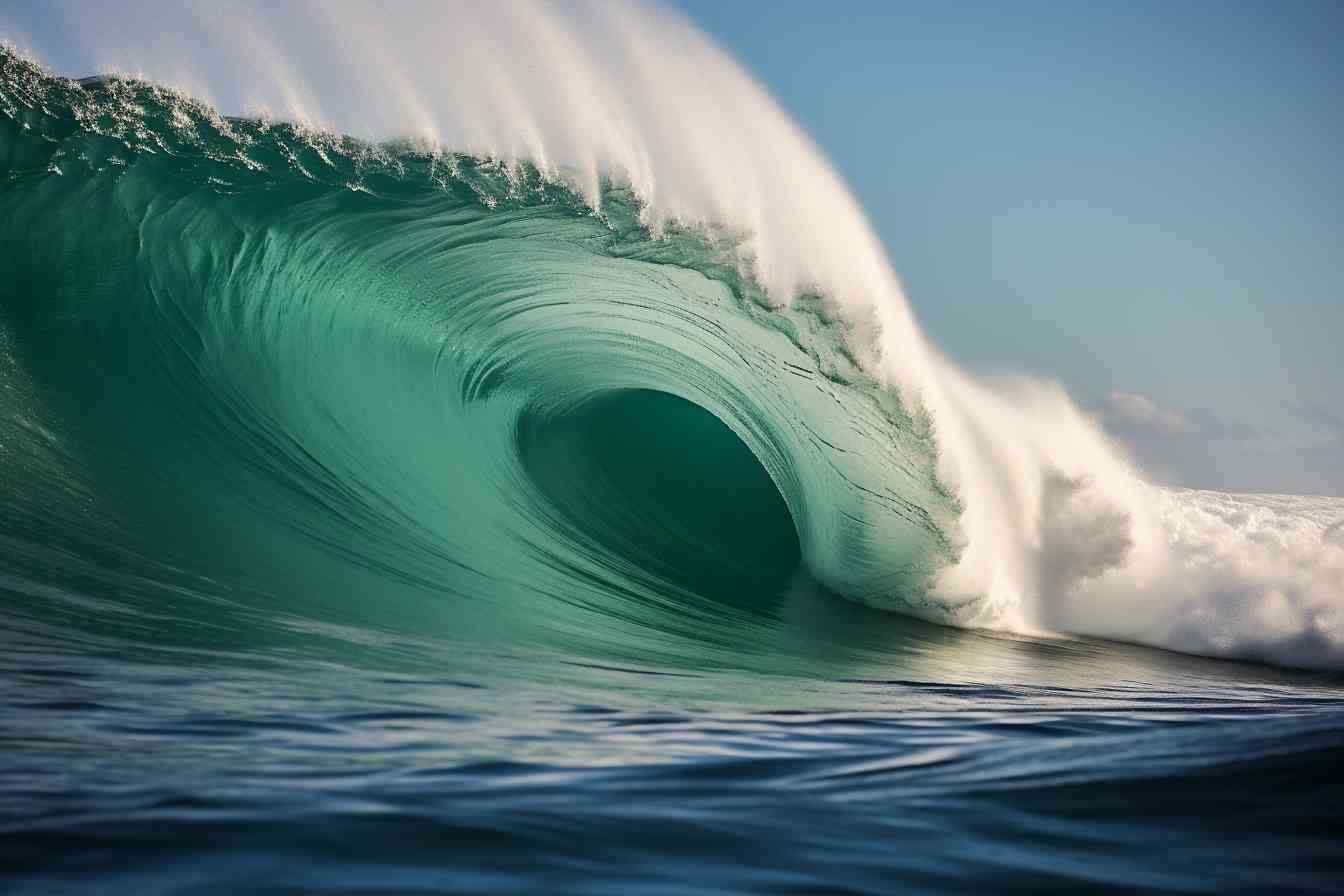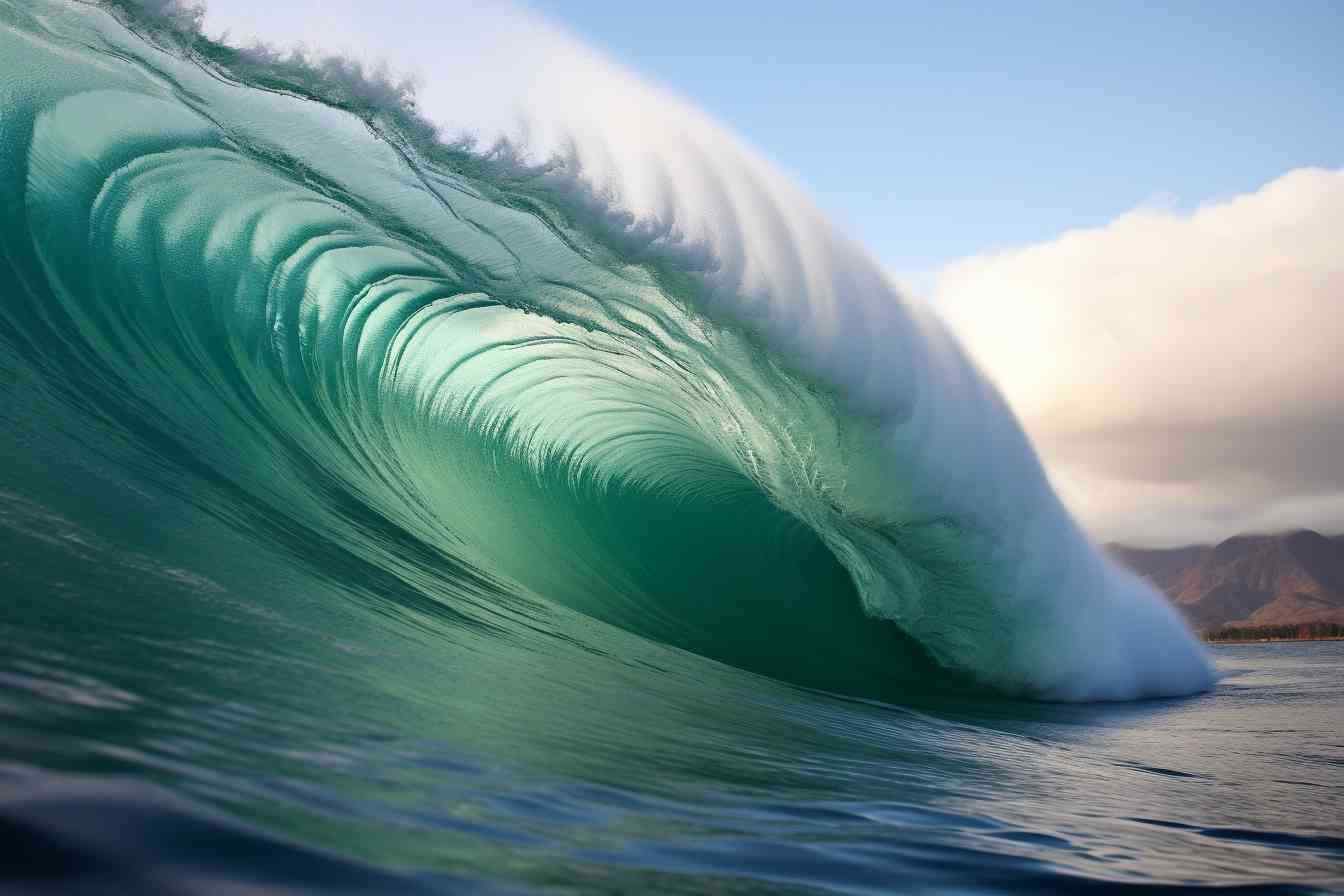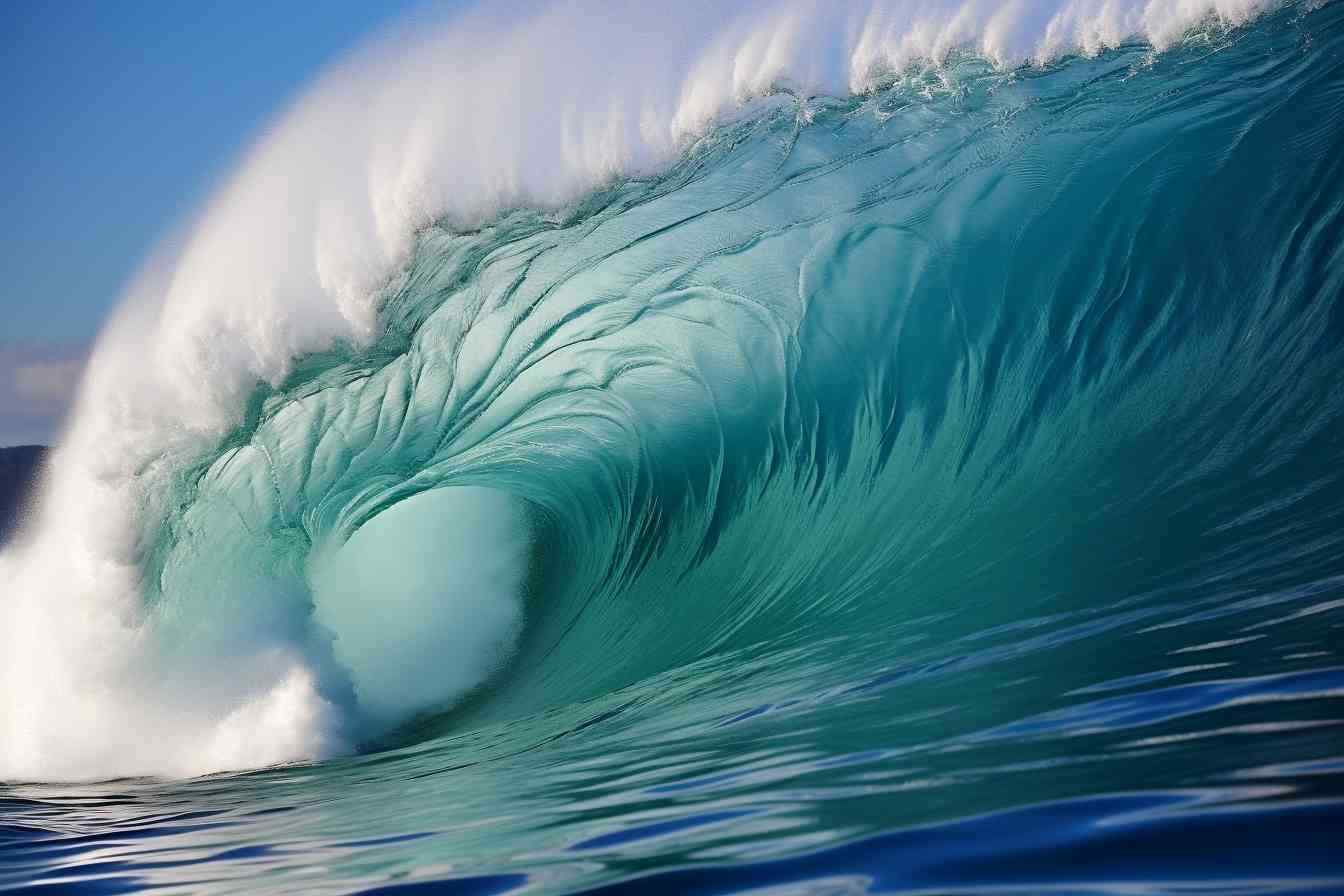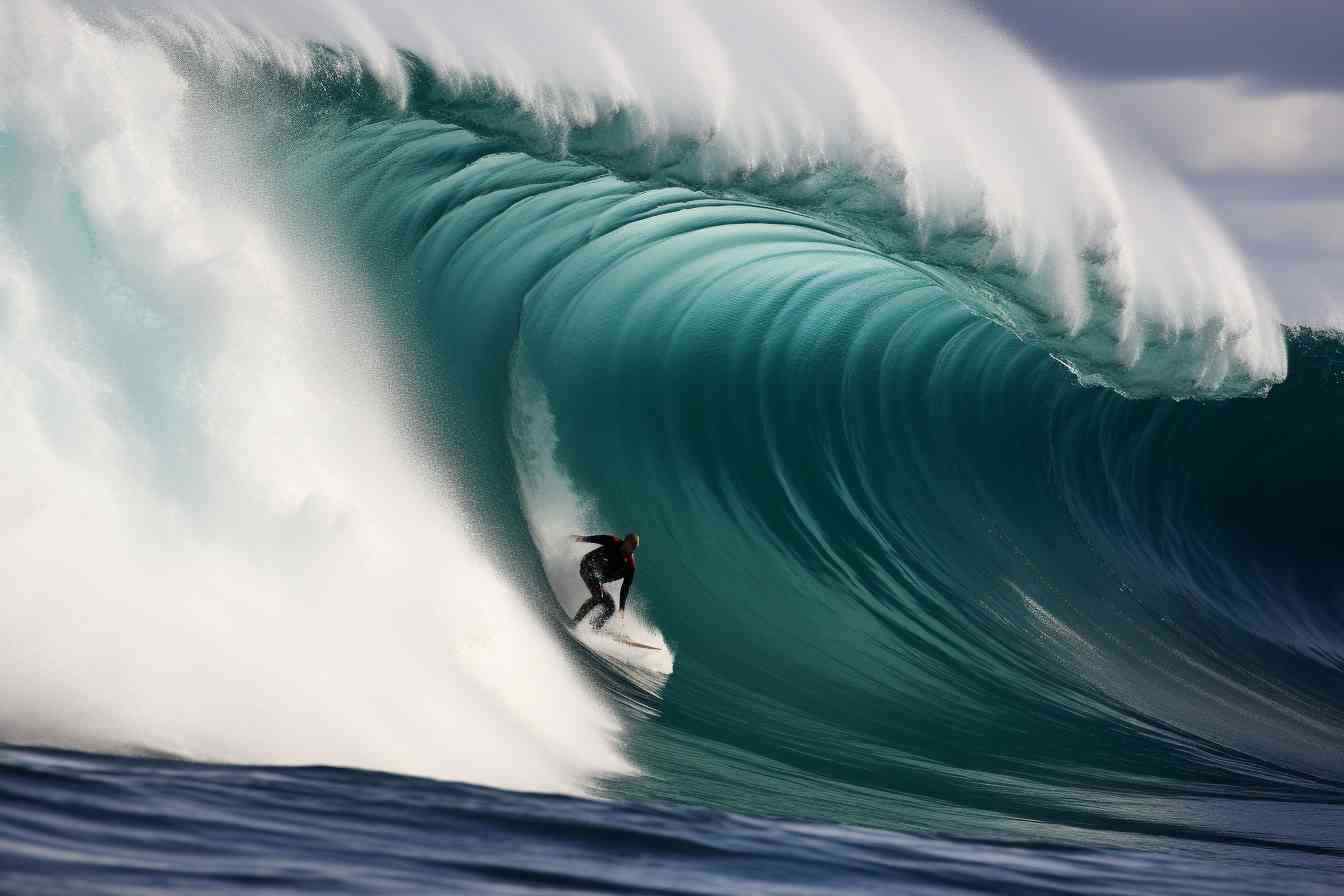Master the Waves Unlock the Secrets of Surf Report Reading

Summary
- Intro: How To Read A Surf Report
- How Do You Read A Surf Report In Magicseaweed?
- How Do You Read A Windguru For Surfing?
- How Do You Read Wave Data?
- What Do The Seconds Mean On A Surf Report?
- Final Verdict
- Frequently Asked Questions
- What’s the best way to interpret a surf report?
- Can you explain wave height in a surf report?
- What does ‘swell direction’ mean in a surf report?
- How important is wind when reading a surf report?
- What’s the significance of tides in surf reports?
- Is it necessary to consider water temperature in a surf report?
- Why do surf reports talk about the period of waves?
- How can I use a surf report to avoid crowded spots?
- Are surf reports reliable?
- How far in advance can I trust a surf report?
- What does ‘local wind’ mean in a surf report?
- Related Video
- Frequently Asked Questions
Intro: How To Read A Surf Report

Man, I gotta tell ya, deciphering a surf report can sometimes feel like you’re trying to crack some ancient hieroglyphs. But fear not, it’s not as enigmatic as it looks – you’ll be speaking the lingo of swells and tides faster than a seagull swoops down on a fish ‘wich. So, let’s dive in, shall we?
First up, you’ll wanna eyeball the swell size. That’s the height of the waves, and buddy, it’s what gets our kayaks dancing on the water. But don’t get it twisted – a 6-foot reading doesn’t always mean each wave is your tall buddy’s height. It’s an average, so expect some giants and some ankle-biters in the mix. The swell period is like the rhythm of the ocean’s heartbeat. Longer periods mean more energy, which translates into waves that can carry you like you’re on a magic carpet ride. And trust me, you’re looking for that sweet spot – not too sluggish, not too quick.
Now, the wind direction is like the mood of the sea – it can make or break your day out there. Offshore winds (blowing from the land to the sea) are the bee’s knees because they groom those waves to perfection, making them as smooth as a porpoise’s noggin. Onshore winds, though? They can be real party poopers, making the waves choppier than a chef’s cutting board during dinner rush.
Water temp is another key player. No one’s stoked about shivering in their kayak like a wet dog in a breeze, right? So keep an eye on those numbers unless you fancy turning into a human popsicle. And tides, oh boy, they’re the ocean’s elevator. They can lift the waves up, making them just ripe for the riding, or drop ‘em low, exposing hidden snags that could really ruin your day.
So there ya have it! Consider this your cheat sheet to give you a leg up on what Mother Nature’s cooking up for your next water rodeo. Stay stoked, paddle out, and remember – the best surfer out there is the one having the most fun. Catch ya on the flip side!
How Do You Read A Surf Report In Magicseaweed?

Oh, diving into the world of surf reports, are we? Now, that’s a language I’ve come to understand like the back of my hand. Getting to grips with a surf report from Magicseaweed—or ‘MSW’ as the regulars call it—is like learning to read the ocean’s mind.
Let’s kick things off with the ‘swell’. It’s not just a synonym for ‘cool’, mind you, it’s the lifeblood of surf forecasting. You’ve got to keep an eye on the swell size, which is in feet, by the way. It’s the height of the surf that you can expect to roll into your turf. Now, don’t go thinking bigger is always better! If you’re just starting out, those towering waves can be a real beast.
Then, there’s the period—or ‘swell period’ to be exact. It’s counted in seconds and, boy does it make a difference. A higher period means more energy, and that means waves with more oomph—they’ll carry you further and give that ride just a bit more zest.
Now, we’ve got the direction. Think of it as the waves’ compass. It tells you where the swell’s coming from. This is crucial because it affects how the waves hit the shore. And let me tell you, when the direction matches the beach’s sweet spot, it’s like the elements align for some killer surf.
Just when you thought we were done, there’s the wind. Honestly, it can make or break your day. Onshore wind can churn the sea into a frothy cappuccino nobody wants to ride. Offshore wind though? Chefs kiss! It smooths the waves into perfect, glassy peaks.
So there you have it, reading a surf report isn’t rocket science, but it does call for a bit of savvy. You’ll get the hang of it. Just remember, when you paddle out there, the ocean’s always got the final word!
How To Read A Surf Report Free
Well, have you ever stood on the shore, board under arm, just wishing you had a crystal ball to tell you whether the surf’s gonna be worth the wax? That’s where surf reports swoop in to save the day. Let’s dive right into how to read a surf report without splurging a dime, shall we?
- Check the swell size and period – The ocean’s pulse, in feet and seconds, dictates whether it’ll be a wash or the ride of your life.
- Suss out the wind direction – Is it offshore, creating those dreamy, hollow waves? Or onshore, making a choppy mess? Wind is the artist that sculpts the waves.
- Look for the water temperature – Don’t be that person who’s either shivering in a spring suit or boiling in a full suit because you didn’t check first.
- Assess the tide times and heights – Tides shape the shorebreak; knowing when it’s high or low can mean the difference between shredding and wading.
- Study the wave height consistency – Variable conditions can mean a mixed bag of swells; consistency is key for a smooth session.
- Review the surf spot orientation – North-facing, south-facing… each beach has its own perfect conditions. It’s like finding the right dance partner for the ocean’s rhythm.
- Examine the weather forecast – No one likes a surprise thunderstorm mid-session. Keep your eyes peeled for Mother Nature’s mood swings.
Yep, reading surf reports can be a bit like decoding hieroglyphs at first. But once you get the hang of it, it’s your golden ticket to some epic sessions. Just go with the flow, and you’ll be shredding in no time.
How Do You Read A Windguru For Surfing?

Oh boy, reading a Windguru chart for surfing can feel like trying to crack secret code, right? But let me tell ya, once you get the hang of it, you’ll feel like a wizard predicting the waves. Now, here’s the scoop on how to unravel those mystical numbers and symbols.
First off, you’ve gotta understand the wind direction and speed. These are like the bread and butter of surfing conditions. Picture this: an arrow on the chart, it’s pointing the way the wind is blowing to, not coming from. If it’s aiming towards the shore, that’s an onshore wind, and honestly, it can make your ride choppier than a salsa dance. What you’re on the lookout for is offshore wind – that’s your golden ticket to smooth, well-formed waves.
Next up, the wave height and the period. The height’s measured in feet, meters, whatever floats your boat, but it’s the period that’s the real MVP. It’s recorded in seconds and shows the time between each wave crest. Longer periods mean more energy, which translates to better surf. If the period’s getting up there – think double digits – you’ll wanna grab your board quick smart.
Now, don’t get all tripped up by the tide times and heights. There’s high tide, low tide, and everything in-between. Some spots will work wonders on a high tide, while others might only break when the tide’s low. It’s a bit of a balancing act, to be honest.
Peeking at those charts, remember, they’re not written in stone. They’re predictions, guesses as to what Mother Nature’s got up her sleeve. Always use them as a guide, but check in with the locals or take a gander at the actual conditions. They say seeing is believing, and that’s spot on when it comes to surfing.
Stay stoked, keep learning, and soon you’ll be reading those reports like a seasoned pro. Just keep in mind – the sea’s full of surprises and she loves to keep us on our toes!
How To Read A Surf Report For Beginners
Oh man, getting your head around a surf report can feel like deciphering an ancient language at first, am I right? But once you break it down, it’s not as tricky as it looks. Let me take you through the essentials, one step at a time.
-
Swell Size and Direction:
- Catch this – the bigger the swell, the larger the waves. If the surf report shows a swell of 6 ft, we’re talking about some pretty decent wave action.
- You’ll want to keep an eye on the swell’s direction too. It’s like the waves have a built-in GPS, and it tells us where they’re heading. If they’re coming straight at the beach, brace yourself for some head-on action.
-
Wave Period:
- The wave period’s the unsung hero that can make or break your surf. It’s the time in seconds between each wave crest. Higher numbers generally mean more powerful and organized waves.
- So if you see a long period on the report, get psyched! That’s a good indicator you’ll catch some smooth, rideable waves.
-
Wind Conditions:
- Let’s talk wind. When the wind’s blowing offshore, it’s like a gentle hand holding up the waves, making them crisp and clean.
- Conversely, onshore winds can really mess with your mojo by making the surf choppy and harder to navigate. It’s a real bummer when that happens.
-
Tides:
- Tides are the mood swings of the sea. A high tide might hide some rocky spots and give you a deeper playground, usually good for beginners.
- Low tide can expose hidden dangers like reefs or make the waves break faster and closer to shore. Keep timing in your mind so you don’t get stuck in a tight spot.
-
Water Temperature:
- Don’t ignore the water temp unless you fancy a bout of the shivers. Depending on the digits, you’ll know whether to suit up in a springy or go full-on Eskimo with a thick wetsuit.
- Sometimes, it’s warm enough that you can skip the rubber suit – but don’t just dream about it, check the report!
-
Overall Wave Quality:
- You’ll often see a subjective rating on the overall wave quality, from poor to epic. Takes a bit of reading between the lines, but it sums up if it’s worth waxing the board or not.
- Think of it as a sneak preview of the performance you’ll witness out on the water.
Remember, each spot’s got its own rhythm and quirks – what works at one beach might be a total fail at another. Keep an eye on your local surf reports, and in no time, you’ll be reading them like your favorite adventure novel. Dive in, let those reports be your guide, and the secrets of the swell will be yours to command.
How Do You Read Wave Data?

Reading wave data’s an art form, you know? It’s like interpreting the mood swings of the ocean before deciding to take your kayak out for a spin. Whenever I look at a surf report, the first thing that grabs my attention is the swell size. These numbers, I’m telling ya, they’re the bread and butter of the surf forecast. They tell you, quite literally, the height of the waves we’re talking about. But hey, it’s not just about the height, is it? You’ve got to consider the swell period too. That’s the time between each wave crest, and it’s crucial because a longer period means more powerful and organized waves. It’s the difference between paddling out on a calm sea or an aquatic rodeo.
Then there’s the wind. You’ve gotta keep a close eye on it. I mean, the wind direction can totally make or break your day on the water. Offshore winds, they’re like a gentle hand that smooths the waves, making them cleaner and more predictable - a kayaker’s dream. But onshore winds? Imagine them as that annoying relative who messes up every family photo. Yeah, they can turn the ocean’s surface into a choppy mess real quick.
And don’t even get me started on the tide. You have to time it just right. High tide might be perfect for some spots, giving the waves a bit more oomph, while low tide could expose hidden dangers like rocks or make the waves too shallow for a good ride. So, when I’m checking the surf report, I really dive into these deets to get a complete picture. After all, a good day out on the waves is all about harmonizing with Mother Nature’s plan, wouldn’t you agree?
What Do The Seconds Mean On A Surf Report?
Talk about the perfect wave, and any surfer’s ears will perk right up. But to catch that wave? Well, it’s all about timing and understanding the nitty-gritty of a surf report. So, let’s dive deep into what the seconds mean on a surf report. Now, I’m no scientist, but I can tell you that seconds in surf lingo refer to the swell period - that’s the time between each wave crest. And trust me, this number is a big deal.
The lowdown on it is quite simple – shorter periods mean the waves are chummier, like they’re in a hurry to hit the shore. Not always the best for hanging ten. On the flip side, when you see the seconds stretching out – say around 12 to 15 or more – you can bet those waves have traveled a long distance, and they’re gonna be the neat, clean sets that give you the smooth rides. Long swell periods signal waves that have more energy and pack a punch in terms of size and power.
Thinking about swell periods gets me jazzed, because it’s the heartbeat of the ocean we’re talking about! A higher number of seconds can mean the difference between paddling out into a mosh pit of waves or into a rhythm that feels like the sea itself is on your side, setting up a dance for just you and the waves. And that’s what we all live for, isn’t it? That harmonious glide where it feels like the ocean’s giving you a high-five and nodding in approval at your courage to dance with the big blue.
How To Read A Surf Report Surfline
Oh, the art of reading a surf report – to the untrained eye, it’s just a bunch of numbers and jargon, but to a kayaker, it’s like decoding the matrix of the sea.
- Understanding the Swell Size – Getting a grip on the swell size is crucial because it tells you how high the waves are gonna be. Not too keen on tackling a ten-footer if I’m just looking for a chill paddle, right?
- Analyzing the Swell Period – This is the time between each wave crest, and it’s super telling. A longer period means more powerful waves, and let me tell ya, it’s a game-changer for planning your day out on the water.
- Deciphering the Wind Conditions – Wind can be your friend or your foe. Knowing if it’s blowing onshore or offshore gives you a heads up on whether you’ll be cruising smoothly or battling for every paddle stroke.
- Checking the Tide Times – High tide, low tide, you’ve got to keep an eye on these. It affects how the waves break and, consequently, can make or break (no pun intended) your kayaking plans.
- Wave Direction Intel – It’s not just the size of the wave but the direction it’s rolling in from that matters. Being in the know helps you position yourself better to catch the right waves, or avoid them when necessary.
Final Verdict
Alright, so wrapping this up - the on how to read a surf report - it’s not exactly rocket science, but it does take a keen eye. To get the best out of your surf day, understanding those nifty little surf reports can seriously make a world of difference. I mean, we’re talking about catching primo waves versus getting totally skunked.
First off, you’ve got your swell size and direction, which, trust me, can make or break your session. Pay attention to that because it’s like the secret recipe to whether you’ll ride giants or just sit and bob like a cork. Then there’s wind direction and speed – if it’s howling onshore, you might as well call it a day and save your energy, right? But a light offshore breeze? That’s the stuff dreams are made of, creating those perfect, glassy faces.
Now, don’t get me started on tide charts – those are crucial! High tide might hide those pesky rocks, but it could also mean mushy waves. And low tide? It could mean barrel city or bone-crushing shore breaks. It’s all about timing.
My point is, interpreting a surf report is an art form all its own. And once you’ve got it down, your days of paddling out to less than stellar conditions will be a thing of the past. So, spend some time, get familiar with the lingo, and soon enough, you’ll be reading those reports like a seasoned pro – which is exactly what you’re after, isn’t it?
Frequently Asked Questions
What’s the best way to interpret a surf report?
Interpreting a surf report is like decoding a secret message for me. Look at the wave height, swell direction, wind conditions, and tide times. I always get a kick out of putting the pieces together to picture the perfect wave.
Can you explain wave height in a surf report?
Sure thing! Wave height is the average size of the highest third of the waves. I like to think of it as a measure of how much fun—or maybe how challenging—my surf session’s gonna be.
What does ‘swell direction’ mean in a surf report?
Swell direction tells you where the waves are rolling in from. It’s like having a heads-up on where to position yourself to catch the best waves coming your way.
How important is wind when reading a surf report?
Wind’s a big deal—it shapes the waves. Offshore winds make ‘em smooth and surfable, while onshore winds can make the sea choppy. It’s all about timing your surf to get those glassy conditions.
What’s the significance of tides in surf reports?
Tides can totally make or break a surf spot. Some breaks work best at high tide, while others are primo at low. It’s all about syncing with the ocean’s rhythm.
Is it necessary to consider water temperature in a surf report?
Absolutely! Water temperature is a game-changer for your gear choices. Colder water calls for a wetsuit that’ll keep you toasty, and in warm water, you might get away with just boardshorts or a bikini.
Why do surf reports talk about the period of waves?
The period is the time between waves. Longer periods usually mean more powerful and cleaner waves, and I can’t help but get stoked when I see a long-period swell on the horizon.
How can I use a surf report to avoid crowded spots?
Surf reports often hint at which spots will be firing, so you can play detective and find a less popular break with similar conditions. It’s about outsmarting the crowds for some sweet solo waves.
Are surf reports reliable?
They’re not crystal balls, but they’re pretty darn good. Surf reports use lots of data and models to predict conditions. I say, use ‘em as a guide, but know Mother Nature has the final say.
How far in advance can I trust a surf report?
I find that surf reports are most accurate a couple of days out. Beyond that, take it with a grain of salt—or sand, since we’re talking about the beach! Conditions can change, so keep an eye on updates.
What does ‘local wind’ mean in a surf report?
Local wind is the breeze right at the beach. It can either mess up the waves or keep them clean, and it can change on a dime. Always worth a look before paddling out.


Comments